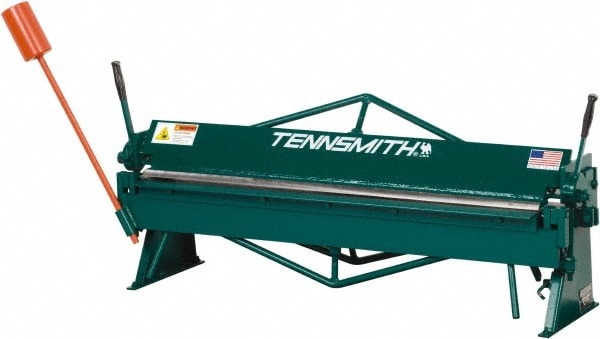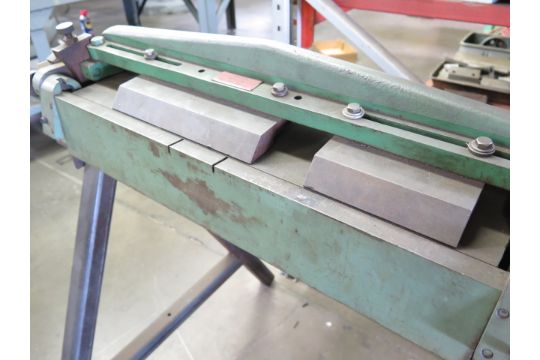A forum member asked about what I'd do differently, and my general thoughts on this thing. I thought i'd update here with pictures.
1. A strongback. The angle iron I used for an upper jaw does bow in the middle with thicker metal.
like so:
It's that triangle at the top with the threaded section to push in on the middle.
The only problem with that is it would make my upper jaw top-heavy and fall over.

Which brings us to the next thing. Clamping. I like the cantilevered systems I see on store bought brakes, and am sure I could build one with some time. Added bonus, your upper jaw can be raised just enough to get the work in, and clamped with less hassle than my "lay it on there, knock it around, clamp it with C-clamps" situation. So, clamping has to go hand in hand with an upper jaw redesign, in my mind.
Here's a picture I dug up of a fairly ideal situation:

My best idea of how to approximate this in Upper Jaw version 2, should I ever get there is to make the upper jaw from maybe 1/2"X 8" plate, and machine an edge to 45 degrees. That machined surface would be parallel to the table, and clamp directly to the work. I hope that's clear. I'm crap at computer stuff, so If somebody's interested, I'll do a hand drawing and post a picture of it.
Edit, here's a better picture:

I'd probably use all thread on the sides for clamping, adjusting for material thickness, and the like, as it would be simpler to work out than the cantilevered system.
The final thing I'd do on a redesign is cut relief slots in this hypothetical upper jaw in places. For what we do, a finger brake is much more useful. If you watch Binky, you see they have voids in their upper jaw to facilitate bending funny little brackets and the like. I believe their brake is home made as well.
Here's the best image I could find of a finger brake:

The Binky guys have a continuous upper jaw with 1/4" (approx) voids in it periodically. I'd do something like that. The reason being you can make boxes easier. The thing is, as long as you initiate the bend on the brake, it is relatively easy to finish the bend accurately by other means., so I don't see these voids as absolutely necessary. Maybe set up a press brake at this for thick, small brackets and the like:

I hope this has been helpful, and if anyone has questions, I'll be glad to answer as best I can.




























